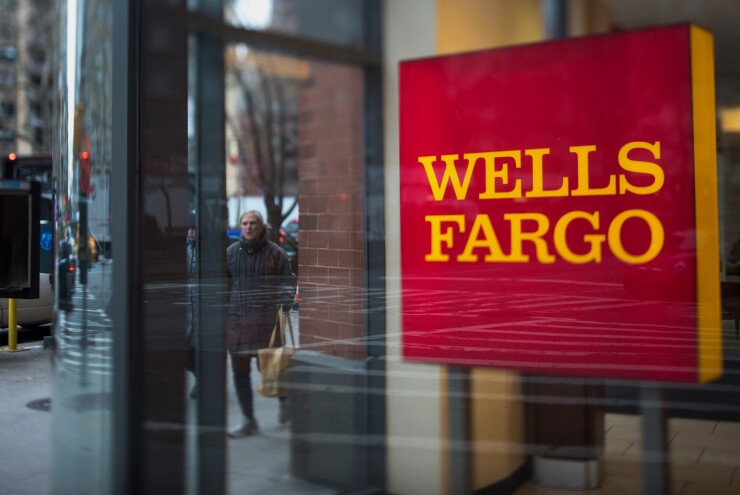Wells Fargo continues to face harsh realities as the third quarter draws to a close.
The coronavirus pandemic. Job cuts. Revenue challenges. A reduced dividend. And an asset cap that’s costing the San Francisco company market share and forcing it to reject business to keep its balance sheet in check.
Outgoing CFO John Shrewsberry told investors on Monday that he doesn’t know when the Fed will lift the cap, which bars the company from growing beyond $1.95 trillion in assets. The Fed issued the enforcement action in 2018 after several scandals, including one that involved employees opening phony customer accounts.
Shrewsberry said the cap has forced the company to walk away from leveraged-asset deals and limit its work with deposit-heavy institutional clients.
“There are definitely a couple of businesses in particular that are big balance sheet users where we've had to curtail them in order to maintain a total size underneath the cap,” Shrewsberry said during a virtual Q&A session at the 2020 Barclays Global Financial Services Conference.
Wells has made $10.6 billion in loans under the Paycheck Protection Program that
The cap’s duration isn’t the only area of uncertainty. The fate of the dividend is also in question after the company
-
The bank is under growing pressure to lower costs.
August 21 -
This follows another August acquisition — an ex-UBS team that managed $1 billion in assets.
August 25 -
Work output was particularly affected on Mondays and Fridays, according to findings discussed by CEO Jamie Dimon in a private meeting with analysts.
September 15
Shrewsberry did not say how many positions will be cut.
The reductions will be among the first wave of layoffs at major U.S. banks, which declared a moratorium on mass layoffs this spring when the pandemic upended the nation.
“The nature of our business is changing, how customers do business with us is changing, where we have excess capacity that's changing and we need to address those things,” Shrewsberry said. “Most of the costs … are people and so that’s likely where a lot of this will be born out.”
On the revenue side, Shrewsberry said net interest income — projected to total $41 billion to $42 billion this year — will likely come in at $40.5 billion. Like the overall industry, Wells is “awash in liquidity” and loan growth is lower than expected, he said.
The company’s loan-to-deposit ratio was 66% on June 30. Citigroup also has a 66% ratio, while Bank of America’s stood at 58%. JPMorgan Chase reported a 51% ratio, where it had nearly twice as many deposits as loans, at midyear.
Shrewsberry, who was named CFO in 2014, announced his retirement in July. Mike Santomassimo, CFO at Bank of New York Mellon and a
Wells, like its peers, is preparing for a second round of Fed stress testing this fall. All large banks must resubmit and update their capital plans to reflect the current economic situation.
“We haven't gotten the details on it yet — both what the scenario looks like or what the consequences or the uses will be for the outcome,” Shrewsberry said. “I think it's a useful exercise, but there's a little bit of uncertainty in terms of what it means.”
Correction: An earlier version of this story contained misspellings of the name of Wells Fargo's CFO. He is John Shrewsberry.






